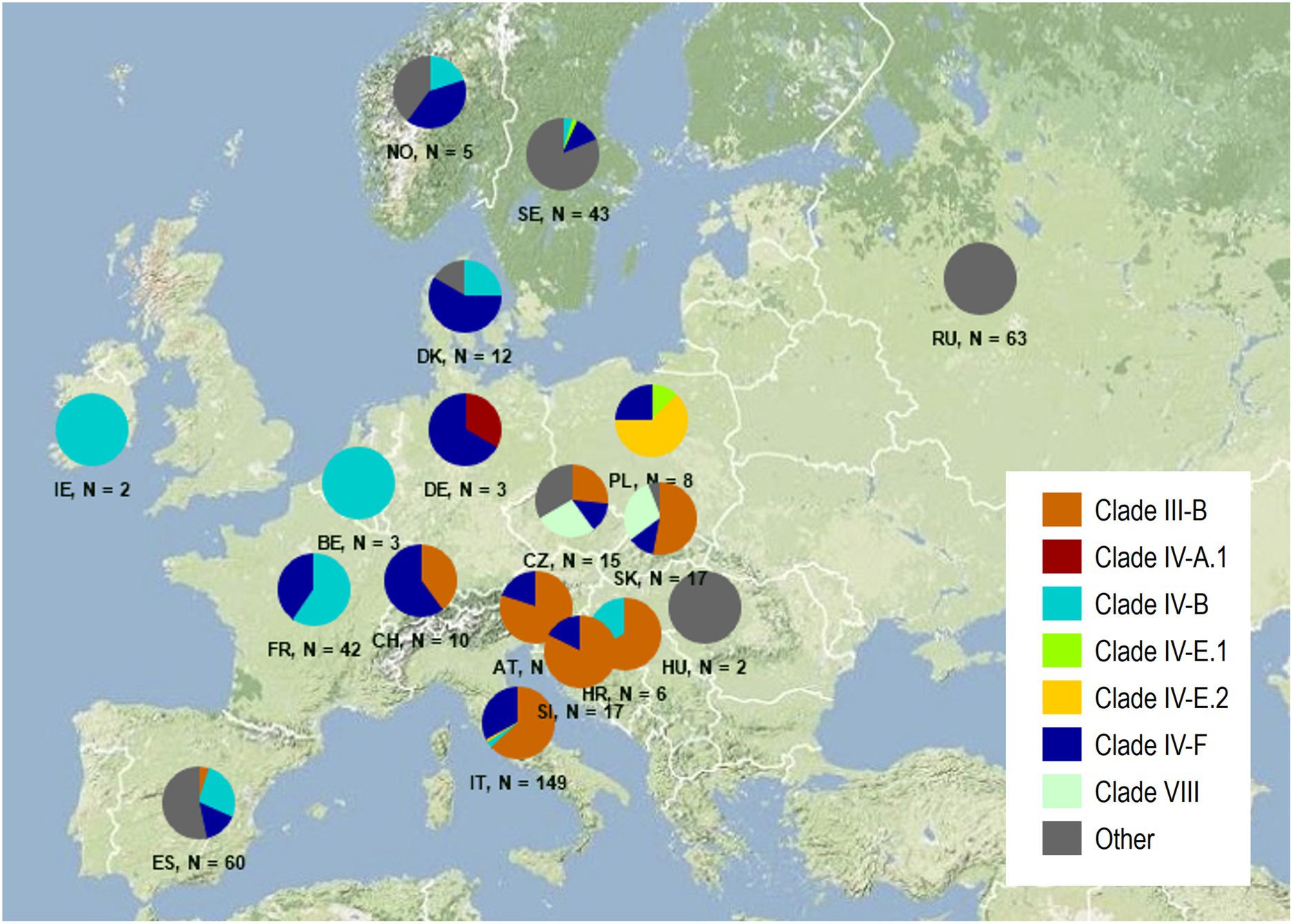Wheat Stem Rust Back in Europe: Diversity, Prevalence and Impact on Host Resistance
The lack of stem rust resistance in widely grown European wheat varieties stress an urgent need to initiate new breeding efforts with a focus on stem rust resistance in current and future breeding programs

A comprehensive study about the return of wheat stem rust in Europe since 2016 has been published based in long-term international collaboration including multiple RustWatch partners, comprehensive rust sampling in multiple countries in Europe and extensive alignment efforts with international rust diagnostic labs that allowed us to interpret results in the context of previously published results from Europe, East Africa and the Middle East/West Asia.
Stem rust has been insignificant in Europe for more than 60 years, but since 2016 it has caused epidemics on both durum wheat and bread wheat in local areas in southern Europe, and additional outbreaks in Central- and West Europe. The prevalence of three distinct genotypes/races in many areas, Clade III-B (TTRTF), Clade IV-B (TKTTF) and Clade IV-F (TKKTF), suggested clonal reproduction and evolution by mutation within these. None of these genetic groups and races, which likely originated from exotic incursions, were detected in Europe prior to 2016. A fourth genetic group, Clade VIII, detected in Germany (2013), was observed in several years in Central- and East Europe.
In contrast, high diversity with respect to virulence and Simple Sequence Repeat (SSR) markers were detected in local populations on cereals and grasses in proximity to Berberis species in Spain and Sweden, indicating that the alternate host may return as functional component of the epidemiology of wheat stem rust in Europe. A geographically distant population from Omsk and Novosibirsk in western Siberia (Russia) also revealed high genetic diversity, but clearly different from current European populations. The presence of Sr31-virulence in multiple and highly diverse races in local populations in Spain and Siberia stress that virulence may emerge independently when large geographical areas and time spans are considered and that Sr31-virulence is not unique to Ug99. All isolates of the Spanish populations, collected from wheat, rye and grass species, were succesfully recovered on wheat, which underline the plasticity of host barriers within P. graminis.
The paper has several implications for plant health with respect to wheat production in Europe and beyond. The lack of stem rust resistance in widely grown European wheat varieties stress an urgent need to initiate new breeding efforts with a focus on stem rust resistance in current and future breeding programs, which could involve both conventional breeding.
The rapid re-colonization of stem rust across large wheat growing areas in Europe, where the disease has been absent for decades, stress the importance of regular and coordinated pathogen and disease surveillance efforts at both European and global scales. Epidemiological studies about similarities/differences in aggressiveness between isolates of prevalent clades and potential temperature adaptation of stem rust to cooler climates would also be highly relevant.